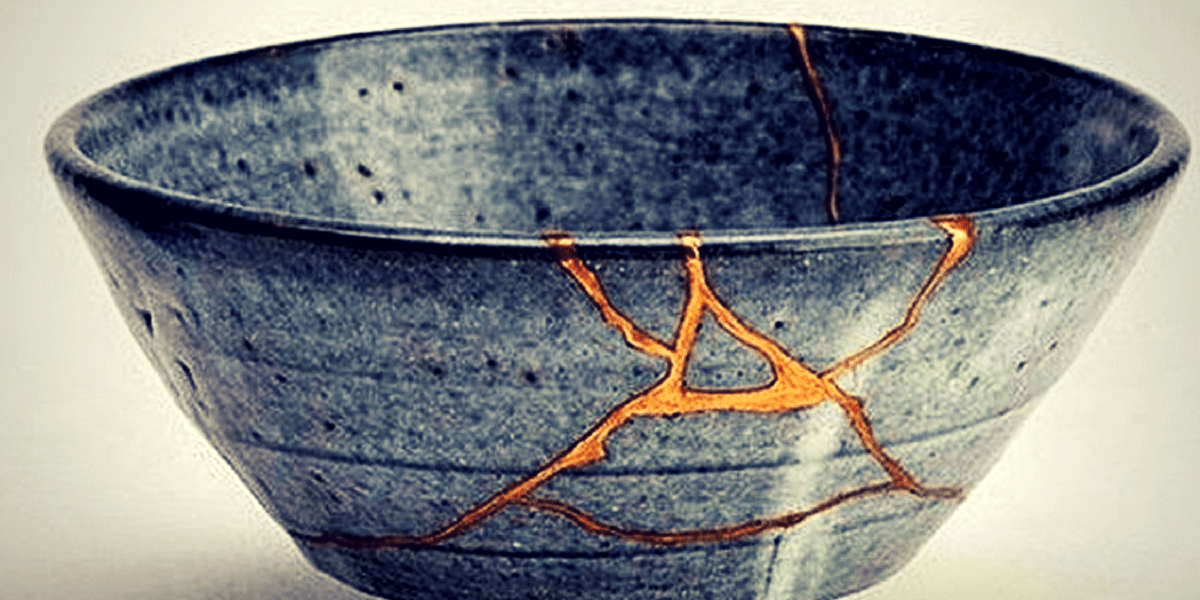Grief, Kintsugi and The Art of Precious Scars
I don’t know what it’s like where you live, but I live in a city without a lot of historical context. When buildings get old, we tear them down and put up a Starbucks. But when we lived in Louisville, there were buildings that had been there for a hundred years and people could tell you the story. Part of that is that I live in one of the youngest states in the Union, but part of it is cultural. Some cultures preserve history better. Tradition.
Some cultures hold on to things better than others.
I won’t talk about grief all of the time. But, as a Hospice Chaplain, it is something I deal with every day. Grief can begin long before a loved one’s death and last long after. It is the price we pay for love. It shows that our hearts are alive, despite our mind’s assertions otherwise.
Grief is something we will all experience and yet we will not all grieve the same. This includes how we finally come to grips with our grief and how we view ourselves in relation to grief. Some people try to “just get over it” and try to just get back to life without really allowing themselves to pass through grief. For some people, grief is viewed as just that time of crying when someone died, and now I’m back to life. But for others, it is the result of love and it is evidence of the hole that is now left right in the middle of our lives. It is something that shapes us.
The question becomes whether we identify grief as part of our beautiful story or whether we try to hide it.
In some cultures, we try to hide our scars. Makeup. Clothing. Plastic surgery.
We try to hide our brokenness.
Some people are more comfortable with brokenness than others. Some of us want to sweep it under the rug and keep on pretending that no one trips over the big pile under the middle of the rug.
Kintsugi is the Japanese art of repairing broken pottery with lacquer mixed or dusted with gold. Sometimes known as “gold joinery,” “golden seams,” or “gold repair,” this is more than just repair. This method brings new life to pieces by highlighting their brokenness. My Modern says:
Beautiful seams of gold glint in the cracks of ceramic ware, giving a unique appearance to the piece. This repair method celebrates each artifact's unique history by emphasizing its fractures and breaks instead of hiding or disguising them. Kintsugi often makes the repaired piece even more beautiful than the original, revitalizing it with new life.
The practice itself arises from several different Japanese philosophical concepts:
Wabi-Sabi: seeing beauty in the flawed or imperfect.
Mottainai: regret when something is wasted
Mushin: the acceptance of change
and
“As a philosophy, it treats breakage and repair as part of the history of an object, rather than something to disguise . . . Not only is there no attempt to hide the damage, but the repair is literally illuminated” (Wikipedia)
What if we treated grief as something not just to “get through” or to bury but understood it as part of life and as part of our beautiful stories? What if we all believed that our stories were beautiful? Kintsugi helps us see how brokenness can be beautiful. But what if we believed it about ourselves?
None of this makes grief easier or diminishes its weight. But I hope it helps give us the perspective that it is part of what makes each one of us so unique. No piece of Kintsugi are the same. No two people are the same. And it is our grief that helps shape us.
Read my follow-up piece Sitting With The Brokenness (More About Grief, Kintsugi and The Art of Precious Scars).

